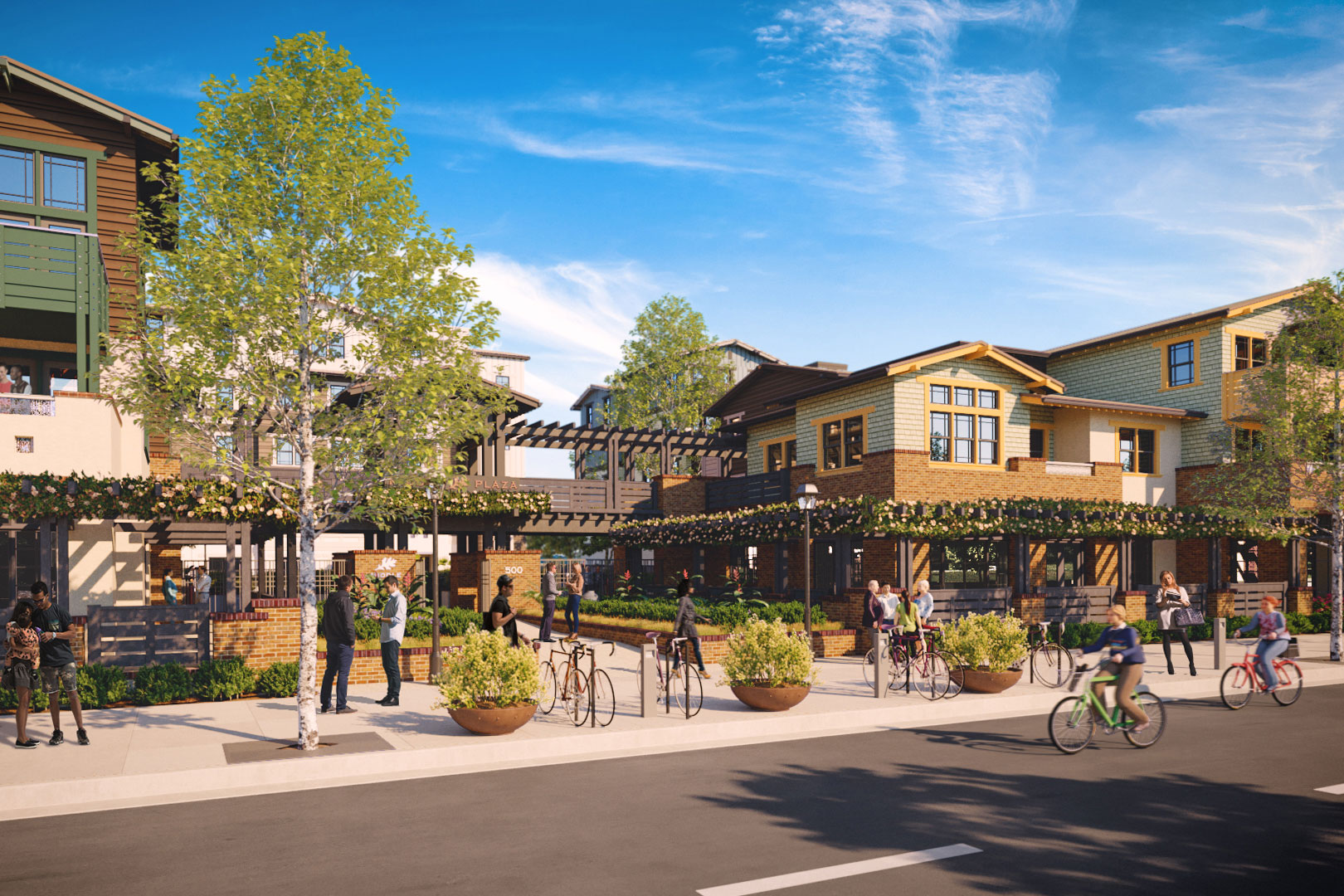Middle Plaza project moves ahead
A Stanford project including new housing, retail and office space along El Camino Real in Menlo Park is a step closer to reality with the city council’s support.
Stanford’s plans for a mixed-use development featuring new housing units along a stretch of El Camino Real in Menlo Park are moving forward.

An artist’s rendering shows the residential area of Middle Plaza. (Image credit: DES Architects + Engineers and Dahlin Group Architecture Planning)
The Menlo Park City Council voted unanimously Tuesday night to approve the Middle Plaza project, which would be built on Stanford land once occupied by a series of now-shuttered auto dealerships. Final approval of an accompanying development agreement is expected at the council’s Oct. 10 meeting.
The project at 500 El Camino Real, near Middle Avenue, includes 215 one- and two-bedroom rental apartments, with an anticipated priority for Stanford faculty and staff. The 8.4-acre project also includes approximately 143,000 square feet of office space, 10,000 square feet of ground-floor retail space and a publicly accessible plaza.
“We are incredibly proud of the effort among the city, the community and the university over several years to create this vibrant addition to the Menlo Park community,” said Steve Elliott, managing director for development in Land, Buildings & Real Estate at Stanford.
As part of the approval process, Stanford agreed to contribute a community benefits package of $6.5 million in monetary contribution and 10 affordable housing units.
The university will provide up to $5 million to the city to fund up to 50 percent of the cost of a new pedestrian and bicycle crossing at the Caltrain tracks to connect Middle Plaza with Burgess Park. Stanford also will provide $1.5 million to the Menlo Park Atherton Education Foundation. If the costs of the pedestrian and bicycle crossing come in lower than tentatively estimated, up to $1 million of Stanford’s crossing contribution would be redirected to the schools foundation.
Addressing local housing needs
Middle Plaza represents one of Stanford’s efforts to expand the availability of local housing within a challenging market.
In addition to adding 2,020 net new beds for graduate students with the Escondido Village Graduate Residences project, the university has been pursuing housing for faculty and staff in nearby off-campus locations. Along with the forthcoming Middle Plaza, the University Terrace faculty housing development is now being occupied; the Colonnade Apartments in Los Altos recently joined Stanford West as nearby apartment options for faculty and staff; and Mayfield Place, an affordable apartment community open to local residents including Stanford affiliates, opened within the Stanford Research Park.
Middle Plaza will feature 103 one-bedroom rental units and 112 two-bedroom units. Ten of the units will be designated in the Menlo Park affordable housing program for below-market-rate units for applicants at low income levels.
Stanford will build the project to the equivalent of LEED Gold sustainability levels. The university also plans a variety of transportation initiatives to encourage transit use, walking, bicycling and car-sharing by Middle Plaza residents.
During the planning process, which began in 2012, Stanford has made significant design changes to the project to respond to feedback from the Menlo Park community. Included in these changes were increased residential units and space, decreased office space, elimination of medical office use and a more than doubling of publicly accessible open space.
Construction of Middle Plaza could begin next spring, subject to local permitting processes.
The Middle Plaza project is in full compliance with the El Camino Real/Downtown Specific Plan, which was approved by the city in 2012 as a road map for downtown development in Menlo Park. The Specific Plan was reaffirmed by voters in November 2014.
